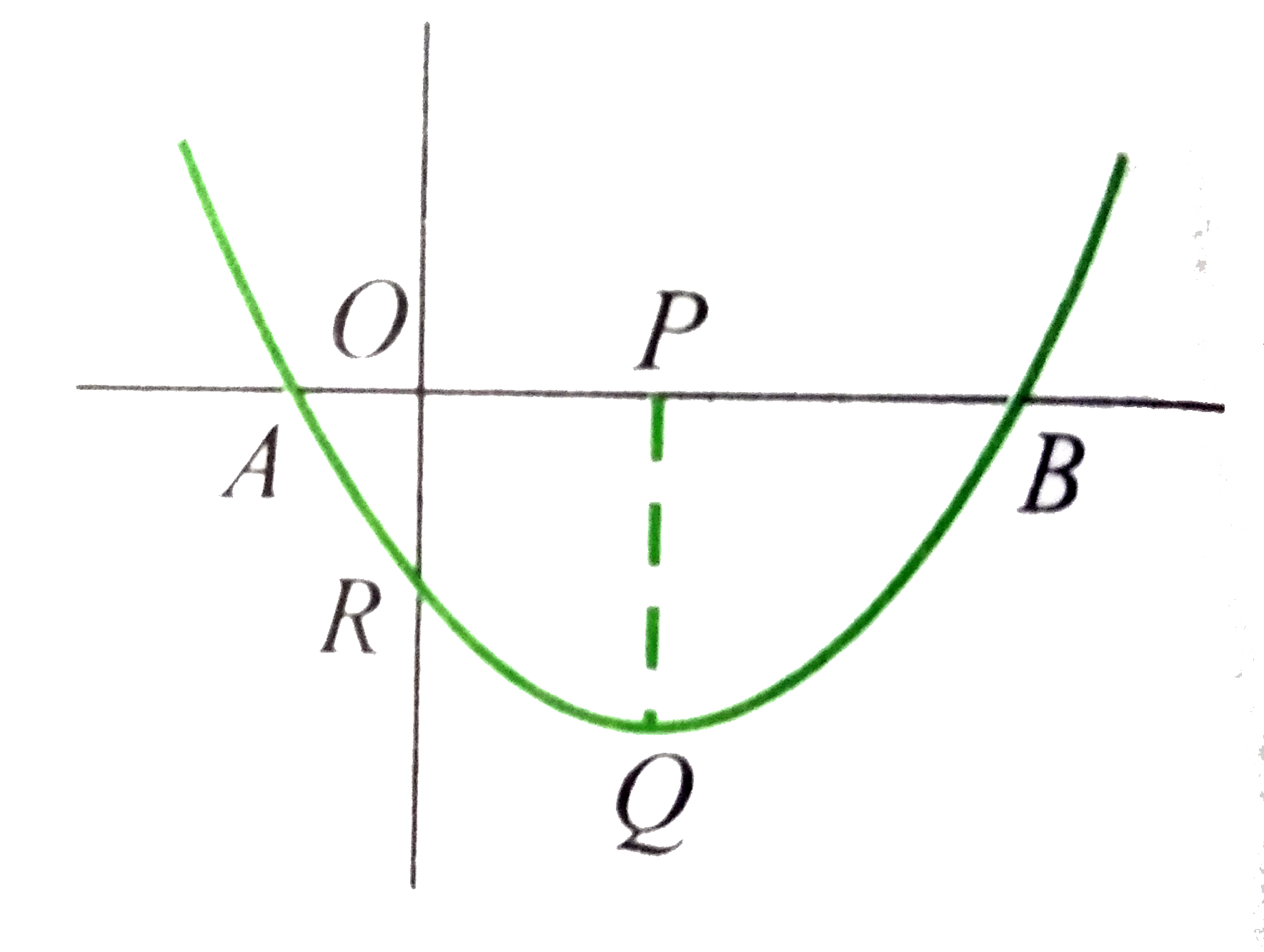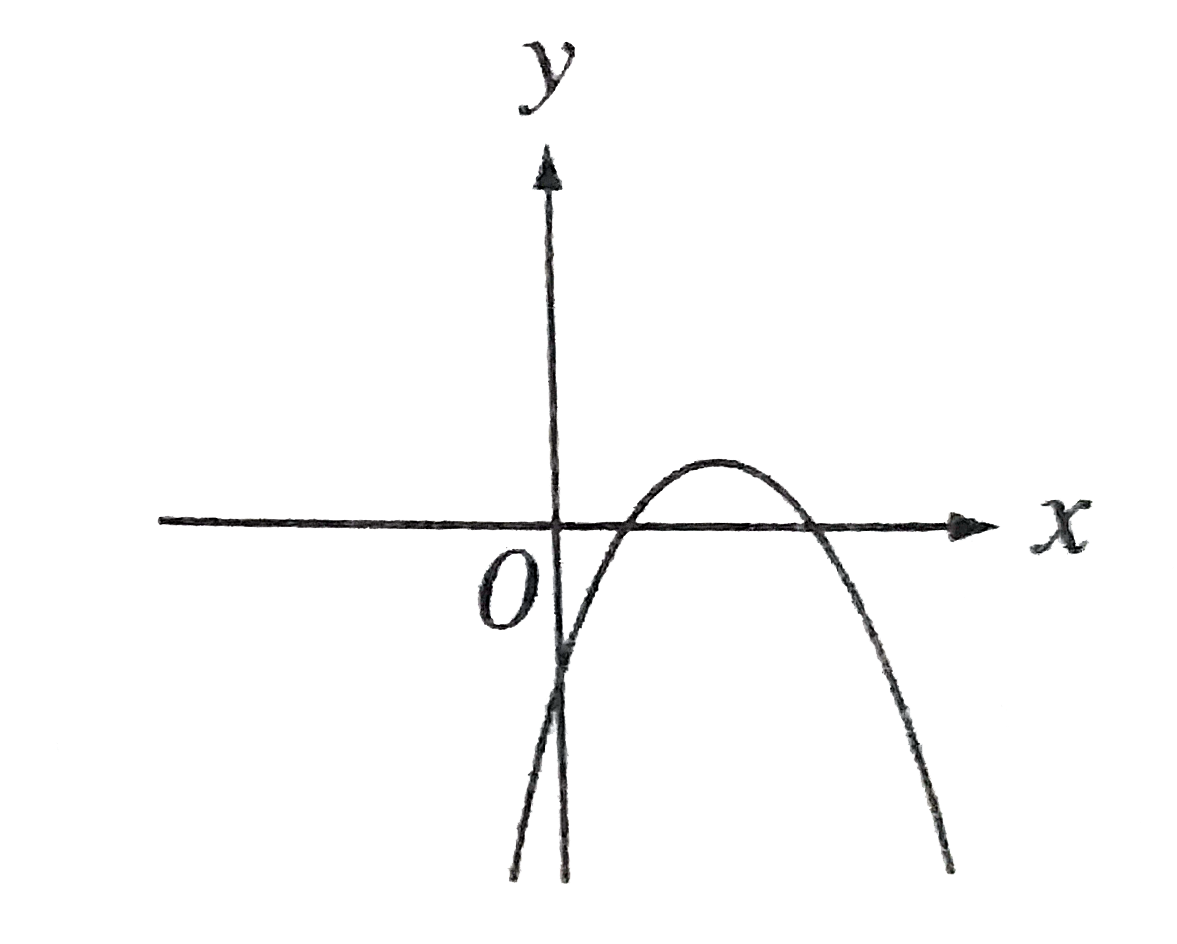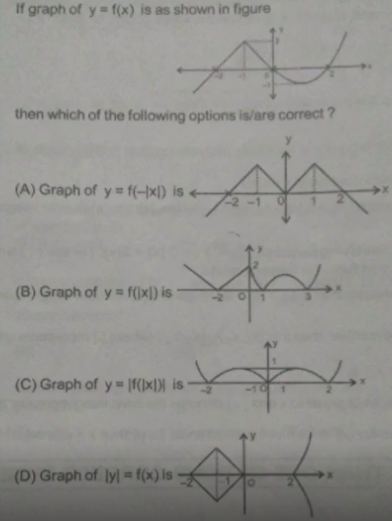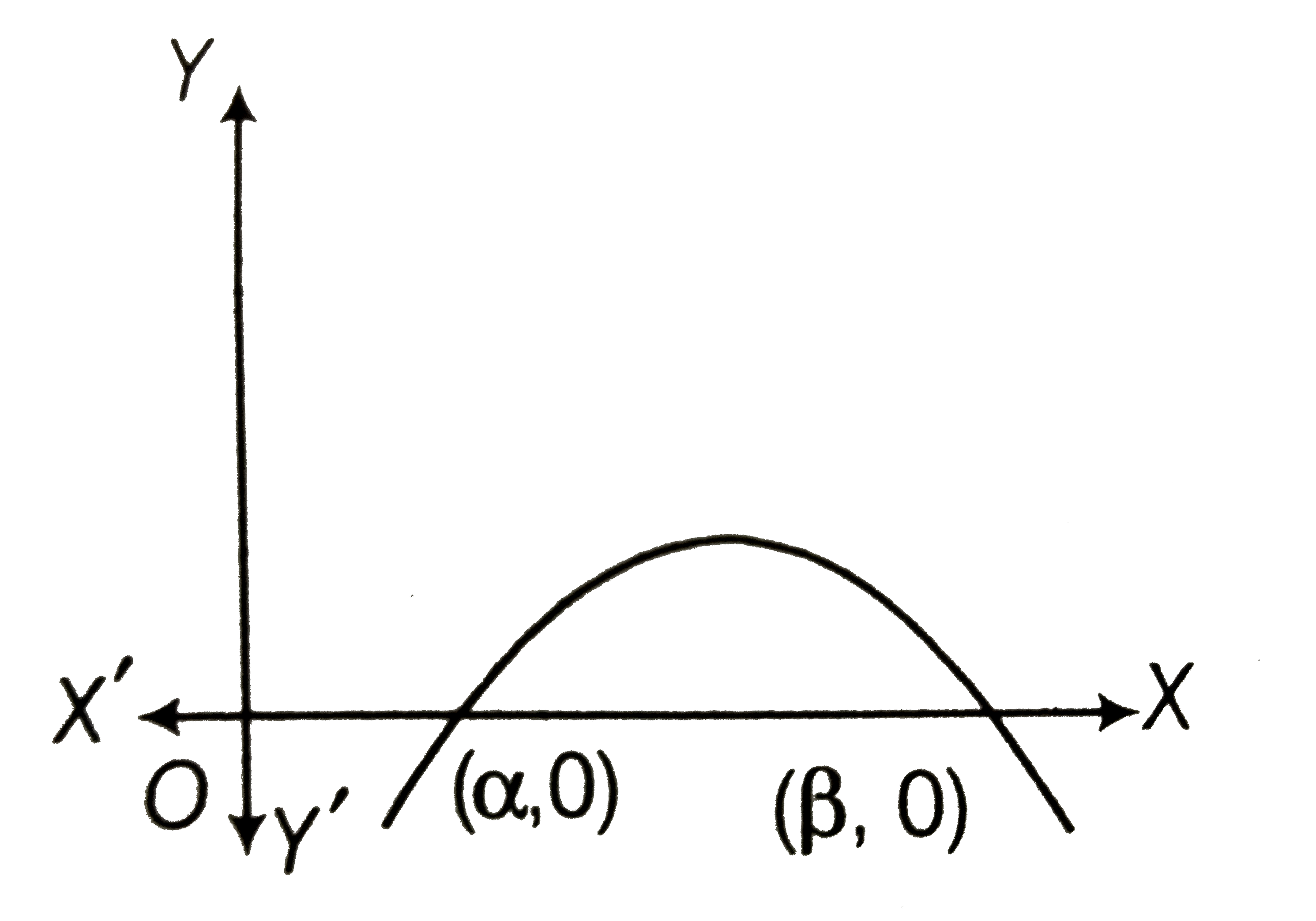Graph of y = ax^(2) + bx + c is as shown in the figure . If
and , the which of the following is /are ture?

A
(a)
B
(b)
C
(c)
D
(d) mx has real
roots for all real m
Video Solution
Text Solution
The correct Answer is:1,3,4
OR = 5
PQ = 9 .
…(1)
OB - 2.5
So, one root of equation is 2.5
...(2)
From (1) and (2),
(Not possible . Since a 0, we must have )
So, x = 2.5, - 0.5 are the roots of y(x) = 0 .
Clealy,
Clearly, above equation has two distinct real roots for any real
values of m.
|
Topper's Solved these Questions
- THEORY OF EQUATIONSBook:CENGAGE ENGLISHChapter:THEORY OF EQUATIONSExercise:Linked Comprechension Type
Explore 37 Videos
- THEORY OF EQUATIONSBook:CENGAGE ENGLISHChapter:THEORY OF EQUATIONSExercise:MATRIX MATCH TYPE
Explore 6 Videos
- THEORY OF EQUATIONSBook:CENGAGE ENGLISHChapter:THEORY OF EQUATIONSExercise:Single Correct Answer Type : Exercise
Explore 89 Videos
- STRAIGHT LINESBook:CENGAGE ENGLISHChapter:STRAIGHT LINESExercise:ARCHIVES (NUMERICAL VALUE TYPE)
Explore 1 Video
- THREE DIMENSIONAL GEOMETRYBook:CENGAGE ENGLISHChapter:THREE DIMENSIONAL GEOMETRYExercise:All Questions
Explore 294 Videos
Similar Questions
Knowledge Check

The graph of y=g(x) is shown in the figure above. If g(x)=ax2+bx+c for constants a,b and c and if abc≠0, then which of the following must be true?Aac>1Bc>1Cac>0Da>0
Let f(X)=ax2+bx+c. Consider the following diagram
 .
.
View SolutionIf graph of y= f(x) is as shown in figure, then which of the following options is/are correct?

View Solution∫(ax2+bx+c)dx =
View SolutionThe adjoining graph of y=ax2+bx+c shows that

View SolutionConsider that f(x)=ax2+bx+c,D=b2−4ac , then which of the following is not true ?
View SolutionIf ax2+bx+c=0,a,b,c∈ R has no real roots, and if c< 0, the which of the following is ture ? (a) a< 0 (b) a + b + c > 0 (c) a+b+c< 0
View Solutionsinn(ax2+bx+c)
View Solution